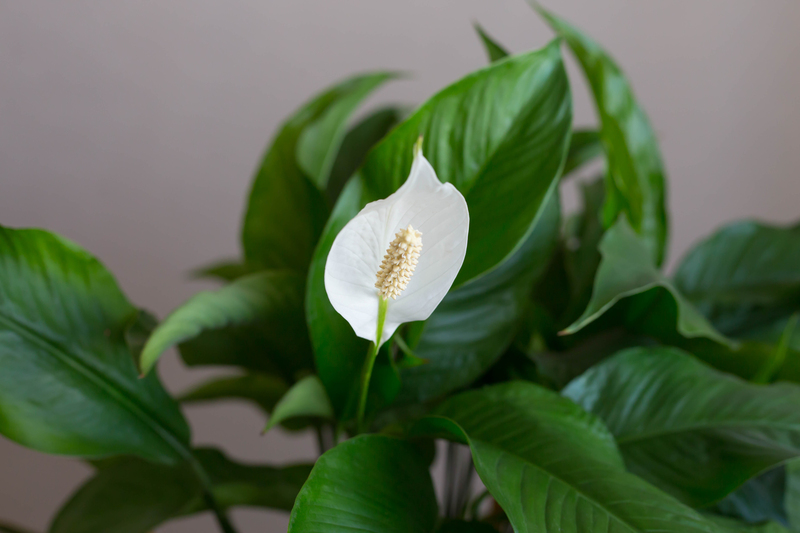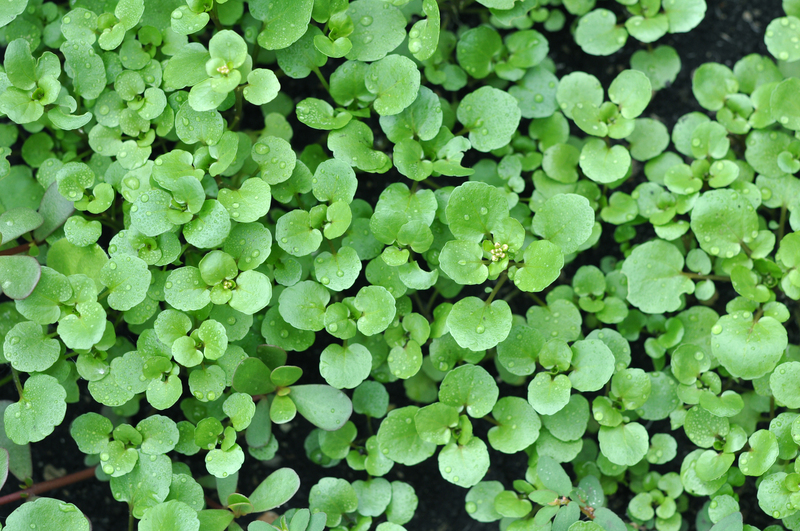Hedge trimming: techniques for dynamic shapes
Posted on 25/08/2025
Hedge Trimming: Techniques for Dynamic Shapes
Hedge trimming is an essential gardening practice that enhances the beauty, health, and functionality of your landscape. While basic trimming keeps hedges neat and manageable, advanced techniques enable gardeners, landscapers, and creative homeowners to sculpt dynamic shapes that truly stand out. If you want a garden that expresses artistry, personality, or architectural flair, mastering these techniques for dynamic hedge shaping is a must.

Understanding Dynamic Hedge Shapes
The term dynamic shape in hedge trimming refers to sculpting shrubs and bushes into forms that go beyond straightforward geometric or traditional designs. These may include undulating waves, abstract forms, animals, spirals, and multi-layered topiary. Dynamic shapes add an element of movement, story, and visual interest to your landscape, making your garden not only visually appealing but also memorable.
Why Consider Dynamic Hedge Trimming?
- Enhanced Curb Appeal: Unusual shapes grab attention and increase property value.
- Creative Expression: Showcase your artistic flair and gardening skills.
- Garden Structure: Dynamic shapes can guide the eye, create focal points, and divide garden spaces effectively.
- Wildlife Habitat: Some shapes can support birds and beneficial insects by providing shelter.
Choosing the Right Hedge Plants
Not every shrub is suitable for dramatic or intricate forms. Plants chosen for dynamic hedge trimming should be:
- Dense and fast-growing for lush shapes and filling in gaps quickly.
- Tolerant of pruning, to bounce back from aggressive cuts.
- Evergreen, so the sculpted forms look good year-round.
Popular Species for Dynamic Hedge Shapes
- Boxwood (Buxus spp.)
- Yew (Taxus spp.)
- Privet (Ligustrum spp.)
- Holly (Ilex spp.)
- Lonicera nitida (Shrubby Honeysuckle)
Essential Tools for Dynamic Hedge Trimming
Creating dynamic shapes with your hedge requires more than basic shears. Invest in the following tools for the best results:
- Hand pruners and secateurs: For precision cutting.
- Hedge shears (manual and powered): For broader, sweeping cuts.
- Topiary frames or wire templates: Vital for guiding complex shapes.
- Measuring tapes, stakes, and string: To ensure symmetry and balance.
- Chalk or landscape spray paint: Mark guidelines directly on foliage.
- Stepladders or platforms: Reach high or awkward spaces safely.
- Gloves and eye protection: Keep yourself safe while working.
Preparing Your Hedge for Dynamic Trimming
Preparation is critical for successful shaping. Here are the steps to get started:
- Evaluate Plant Health: Only trim healthy, well-established hedges. Address pests, diseases, and nutrient issues first.
- Clean Up the Area: Remove debris, weeds, and obstructions around the hedge.
- Plan Your Design: Sketch your intended shape on paper or digitally. Consider the hedge's height, width, and the visual goal.
- Mark Your Guidelines: Use string, frames, or chalk for marking lines and curves.
- Sharpen and Clean Tools: Sharp blades make cleaner cuts and reduce plant stress.
Step-by-Step Techniques for Dynamic Hedge Trimming
1. Structural Pruning
This lays the groundwork. Start in late winter or early spring, before new growth. Remove dead, diseased, or crossing branches. Open up the center for air and light. This helps maintain a strong framework for more detailed shaping.
2. Rough Shaping
With your outline and guidelines in place, use hedge shears to make broad cuts, roughly forming the dynamic style you want. Don't worry about perfection--this phase removes bulk and begins the visual transformation.
3. Refinement and Detailing
Switch to hand pruners for detailed work. Follow your guidelines closely, gradually perfecting curves, angles, or intricate forms. For topiary shapes, cut small sections at a time, stepping back frequently to assess symmetry.
4. Using Frames and Templates
For complex or whimsical shapes, use wire frames as guides. Fasten them gently to the hedge, trimming foliage that extends beyond. This method is ideal for creating spirals, animals, or geometric sculptures. Reusable frames can be left in place for slower-growing species.
5. Smoothing and Polishing
Finish each session by neatening edges and surfaces. Slightly round the tops of shapes to encourage rain runoff, reducing snow or ice buildup in winter climates. Use a light touch to achieve a silky, professional finish.
Popular Dynamic Hedge Shapes and How to Achieve Them
- Spirals: Start with a tall, single-trunked shrub. Establish the spiral pattern with string and trim incrementally around the plant. Refine over several years for drama and impact.
- Waves: Ideal for boundary hedges. Mark alternating high and low points along the hedge, using stakes and string. Cut gently to flow between marks, so the pattern appears seamless.
- Cloud Pruning (Niwaki): Inspired by Japanese gardens. Shear shrubs into billowed, rounded clumps on a branching framework, creating the effect of floating clouds.
- Animal Topiary: Use wire frames shaped like animals or birds. Clip foliage as it grows beyond the frame over multiple seasons, meticulously filling out the sculpture.
- Geometric Patterns: Squares, cylinders, pyramids, or cones. Rely on precise measuring and marking. Flat planes must be horizontal, and angles consistent, requiring patience and precision.
Best Practices and Expert Tips for Dynamic Hedge Trimming
- Always trim in stages. It's better to undercut and trim more frequently than cut too much at once.
- Step back repeatedly. Look at your work from a distance every few minutes for symmetry and proportion.
- Maintain regular trims. Frequent light trimming is easier than infrequent heavy pruning.
- Feed and water hedges. Dynamic shapes place extra demands on plants. Regular feeding, watering, and mulching keep them healthy.
- Choose the right season. For most evergreen hedges, late spring or mid-summer is ideal. Avoid hot, dry, or freezing spells.
- Sanitize tools. Cleaning blades prevents disease spread between plants.
- Don't rush complex shapes. Some forms take years to achieve. Be patient for stunning results.
Common Mistakes in Dynamic Hedge Trimming & How to Avoid Them
- Cutting too much at once. Can stunt growth or create unsightly holes. Instead, trim gradually over time.
- Ignoring plant health. Sick or malnourished hedges don't withstand frequent shaping well.
- Skipping maintenance. Dynamic shapes require ongoing clipping. Letting growth get away from you can ruin intricate designs.
- Poor tool maintenance. Dull or dirty blades shred instead of snip, harming your plants.
- Lack of planning. Attempting detailed shapes without preparation often leads to disappointment.
Aftercare: Keeping Your Dynamic Hedges Healthy and Vibrant
Once your dynamic shapes are in place, ongoing care is essential to keep them looking spectacular:
- Regular Watering: Especially important for recent transplants or during dry spells.
- Balanced Fertilizer: Feed with slow-release formulations to encourage dense, healthy growth.
- Inspect for Pests: Check regularly for mites, aphids, or scale insects and treat promptly.
- Mulching: Suppresses weeds, retains moisture, and improves soil health.
- Winter Protection: Consider windbreaks and anti-desiccant sprays in harsh climates.

Frequently Asked Questions About Dynamic Hedge Trimming
Q: How often should I trim my dynamic hedge shapes?
It depends on the species and the intricacy of the shape. For most evergreen hedges, trim lightly every 6-8 weeks during the growing season. Complex topiaries may require monthly touch-ups.
Q: Can I train an old, overgrown hedge into dynamic forms?
Yes, but results take time and patience. Heavily overgrown hedges might need to be cut back hard, then gradually reshaped over multiple seasons. Some old hedges may never fully recover density in sparse areas, so start early if possible.
Q: Do I need a professional for dynamic hedge trimming?
Homeowners and hobbyists can achieve beautiful dynamic hedge shapes with dedication and the right tools. However, for complex topiary animals or large features, professional guidance and custom frames can be invaluable.
Final Thoughts: Why Dynamic Hedge Trimming Is Worth the Effort
Mastering dynamic hedge trimming transforms a plain hedge into a living work of art. Whether you opt for undulating waves, architectural spirals, or whimsical figures, these shapes provide year-round visual impact, structure, and interest in your garden. With the right plants, a keen eye, quality tools, and routine maintenance, anyone can create and enjoy hedge shapes that command attention and spark conversation.
Ready to give your landscape a fresh identity? Start small, experiment with shapes, and let your creativity grow alongside your hedges!
Keywords used:
Hedge trimming, dynamic hedge shapes, hedge sculpting, creative hedge cutting, topiary, shaping hedges, advanced hedge trimming, best plants for sculpted hedges, techniques for dynamic hedge trimming, hedge maintenance, artistic hedge designs, pruning for dynamic shapes, topiary tools, care for sculpted hedges.

